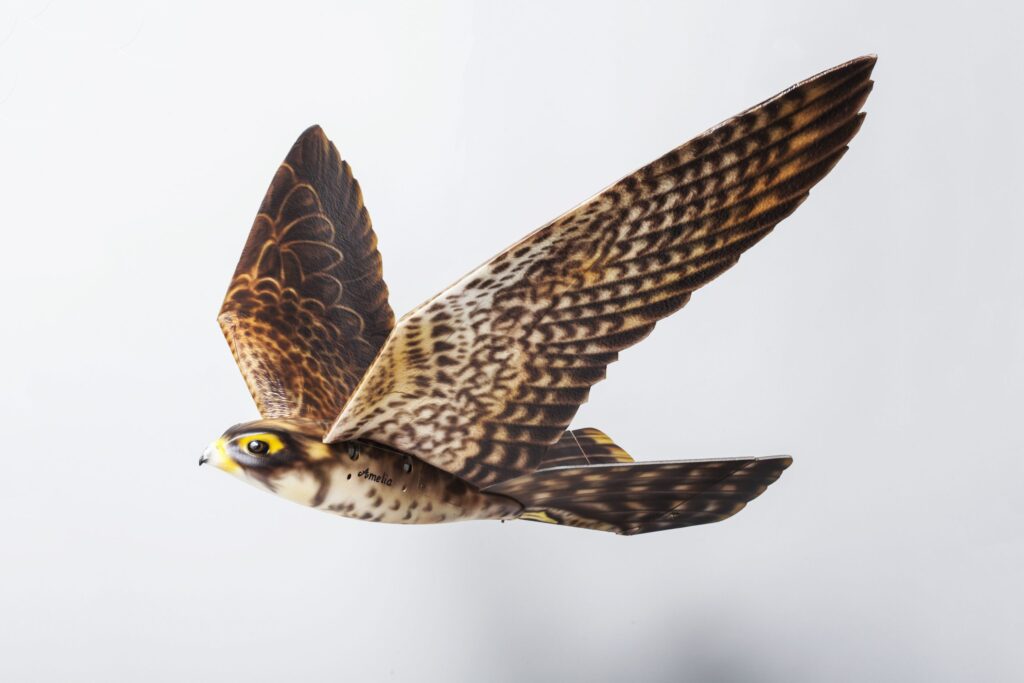Bird Strikes pose a significant risk to aviation safety, inducing accidents, heavy repairs, and even fatalities in some cases. Airports around the world put into effect a variety of bird control strategies to take the edge of these risks. For ensuring passenger safety, effective bird control becomes paramount. Additionally, this would minimize aircraft damage and ensure operational efficiency. This article examines best practices, innovative methods, population management, techniques applicable to large airports, as well as policies and guide lines for airport bird control.

- Best Practices for Airport Bird Control
Proactive management and regular monitoring are key to effective airport bird control. Airports typically adopt a multi-layered approach; deterring birds, habit modification and population control.
- Habit alteration: The first step to begin with is to make the airport less attractive to birds by making alterations to the environment. This process consists of eliminating sources of food, such as garbage and removing areas where birds can nest. Controlling grass heights and displacing water sources that attract birds can help reduce their presence.
- Bird deterrents: Airports make use of visual, auditory and physical hindrance to make the environment uncomfortable for birds. This constitutes the use of scare devices, such as predator models, kites, and so on. Gun firing is also quite usual in some airfields to drive birds away from runway thresholds.
- Fencing and Barriers: Using physical barriers can prevent birds from entering vulnerable areas, specifically runways and taxiways. These barriers colligation with habitat modification can be a pivotal move to mitigate bird movement around the airport vicinity.
- Monitoring and reporting: Regular monitoring of bird activity plays a vital role in tracking the effectiveness of bird control measures. Airports use radar systems, bird detection cameras, and on-ground observation teams to track bird movements. The database is then analyzed to forecast potential threats and do some refining in bird management strategies as needed.


Photo: IAF UH-60 after birds strike Via Wikimedia Commons 2. Innovative bird control methods at airports
With the advancement of technology, Airports are endorsing more inventive procedures to reduce bird strikes that offer more room to efficiency and are less disruptive as well.
- Radar Systems: Advanced bird radar technology is progressively used by airports to detect bird movement in real time which allows airport staff to take preventive measures like closing runways temporarily or deploying deterrents, when large flocks are detected in vulnerable areas.
- Laser Technology: Some airports have started using lasers to deter birds which are non-toxic and effective at disturbing bird flocks without causing harm. The light patterns puzzle birds, driving them away from high-risk areas of the aerodrome.
- Drones: Use of drones is another innovative and emerging trend. Drones carry an advantage of covering large areas quickly, sending birds into flight and away from airport surroundings.
- Smart Deterrents: Fully automated systems such as robotic bird dispersers, are being developed to provide targeted bird control. These systems can be organized to activate based on bird movement or other environmental cues that reduce human efforts. RobotFalcon which mimics the movements of the large and powerful falcon, and has proved to be highly effective at keeping birds away in a recently published study has been developed to help prevent bird strikes.


Photo: Via Drone Life A RoBird Falcon designed to defend airports against bird strikes
3. How Airports Manage Bird Populations
Managing bird populations around airports is a compound process that requires proper coordination with local wildlife agencies and consistent monitoring.
- Relocation: Airports may even choose to relocate birds to less risky areas in some cases. But, this method is often a temporary solution as birds may return. In this scenario, local wildlife protection laws may also come into play.
- Population Control: Sometimes, airports may even need to work with wildlife management professionals regarding bird control measures through hunting, trapping and in rare cases, removing. These methods are closely observed and regulated to confirm legal compliance with the prevailing conservation laws.
- Partnership with local authorities: A lot of airports collaborate with environmental groups, government agencies, and local authorities to manage bird populations. Joint effort with the local authorities can lead to more effective regional bird control strategies.4. Bird Control Techniques for Large Airports
Large international airports often face quirky challenges due to the broad size of their facilities and high air traffic volume.
- Extensive Surveillance: An effective trio of radar, acoustic sensors, and video surveillance is employed to monitor bird activity across vast areas. This allows instantaneous tracking and more targeted response efforts.
- Escalated Coordination: With large scale operations, airports dedicate a wildlife management team to bird control activity across the facility focusing on safety as well as ensuring smooth and efficient flight operations.
- Regular Drills and Trainings: Airport Staff undergo regular training to effectively handle bird-related incidents and accidents. Simulated drills prepare staff for real life scenarios to quickly respond to bird strikes or flocks near runways.
- Use of wildlife corridors: Large airports blend wildlife corridors within the airport property to allow birds to pass safely without entering critical flight paths that highly reduce the chances of bird strikes as those corridors are placed at a safe distance from runways and taxiways. For reference, the FAA reports that more than thousand bird strike incidents have been reported under 2000 feet AGL. This will have a positive impact on bird strike rates in the airport vicinity.


Photo: Herring gulls in jet path during low level flight via Wikimedia Commons
5. Airport Bird Control Policies and Guidelines
Bird control at airports is guided by the Civil Aviation Authority of the respective country. The competent authority of each state defines detailed policies and guidelines emphasizing a proactive and comprehensive approach to bird management. Key elements include:
- Wildlife Hazard Management Plans(WHMPs): Airports need to build up and execute WHMPs that evaluate the risk of bird strikes and figure out distinct strategies for managing bird populations. These plans should be viewed routinely and updated for any new development or changes in bird activity pattern.
- Reporting and analysis of bird strikes: The aviation authorities maintain bird strike incidents to identify trends, determine high risk areas and assess the effectiveness of bird control programs. The authorities encourage airports, staff and stakeholders to report safety events or potential hazards, however insignificant they may consider those events at that time.
- Collaboration with Local Authorities: Those policies that act as a bridge between local wildlife agency and airport authority should be encouraged to put into action. This includes compliance with environmental laws governing the treatment of birds, adherence to the Migratory Bird Treaty act and other local regulations.
- Risk-based approach: The FAA advocates for a risk-based approach to bird control, where airports assess the risks posed by different bird species and implement customized strategies. Elements like migration patterns, seasonal variations and local wildlife habitats are to be considered. On Oct. 3, the FAA issued a revised Special Airworthiness Information Bulletin (SAIB) to help rotorcraft owners, operators, aircrew, and passengers understand rotorcraft bird strike safety standards. The SAIB (AIR-21-17R, Rotorcraft Bird Strike Protection and Mitigation) introduces a voluntary Rotorcraft Safety Promotion Concept (RSPC) to “encourage the installation of safety enhancing designs, use of certain safety equipment, and adoption of operational procedures to mitigate the risk of bird strike
To put in a nutshell, airport bird control is a dynamic and multi-dimensional field, requiring continuous innovation, meticulous monitoring, and collaboration. By complying to best practices, adapting to new technologies, and following established policies, airports can reduce the risk of bird strikes, ensuring a safer sky.
